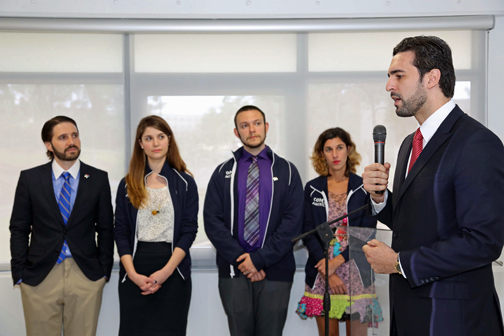Practical Techie: Biz tech takes on new clothes


Author Rafael Matos is professor of multimedia at a private university and director of the Caribbean Multimedia Center, a nonprofit media lab focusing on closing the digital divide. Questions should be sent to [email protected].
New technologies always climb on the shoulders of older, successful development. The next wave of inventiveness is already sprouting up all over the digital landscape, on a very worldwide scale.
In Puerto Rico alone, innovative boricuas have come up during the last three years with at least 120 new tech efforts, most of them in the form of mobile apps, medical record, education, or management software.
If we define technology as the application of scientific knowledge for practical purpose, an app to help a commuter navigate efficiently through the daily traffic jam gets as practical as it can. For such, Israeli professors and their students came up with waze.com to help drivers help other drivers negotiate the gridlock.
Google bought the app for $1.3 billion in 2013 and it now has some 50 million users that feed Waze’s useful traffic info in the countries it has mapped, including Puerto Rico.
Commerce can look forward in the next two years to even more advancements in such fields as mobile tech, biz social media, gesture technology, and gaming routines.
Take mobile platform tools. Keep an eye on a burgeoning development that will soon move smartphones data through a new type of data server. Data centers are the workhorses of the information age, to paraphrase informatics expert, Boris Grot. Thus, our digital world is driven by information hubs rigged up to very high power servers.
That’s because social media traffic and Web searching require mass storage and fast information processing. They use servers that eat up lots of electrical power. Mobile phones don’t. So, the next wave of data centers will be low-power servers designed specifically for mobile applications.
Low-energy systems are practical because data from cell phones and tablets glides easily from and to smaller, less energy guzzling hubs. This, we all hope, will translate into cheaper service rates, competitive products and a new breed of apps for mobile commerce.
We also see on the horizon new methods of enterprise social networking for commerce. The basic building blocks of social media — profiles, news feeds, forum, instant messaging, social graphs, media galleries — are being shifted about, intensified, regrouped and applied to more specific business outcomes.
Take, for example, requests for proposals. In the old days, it was a long drawn, meticulous, slow process. Now firms use enterprise social media to quickly collaborate on responses to proposal requests, customer service inquiries and business plan reviews.
Social tools = efficiency
In essence, social tools replace meetings and conference calls and reduce extensive email chains. Social networks are now being used to promote swift collaboration amongst employees and efficient sharing of tips and ideas about the workplace. Enterprise social media allows documents and white papers to be traded quickly through the social grapevine in real time for prompt decision-making.
In this way, social media streams will surely improve speed and quality of work. Experts predict that by 2016, the majority of businesses will have their own mini-Facebooks or Twitters to override the old company intranet.
Basically, this new technology should improve both internal business and external customer communication by 90 percent, experts predict. Ample information sharing and transparency of business practices are the by-products of such technology.
Digital innovation is also moving fast toward what’s termed as organic communication. This a more natural user interface between humans and machines. Glimpses of this new technology are already in the marketplace, mainly in the security sector — retina recognition, fingerprint ID, face validation.
In the future soon, devices will respond to our needs through natural, very intuitive interfacing such as voice commands, hand movement, head gesturing and on a deeper level, emotions, brainwaves and thought generating. Commands to machines in open space — gesture technology — will become more and more invisible and less one-dimensional, such as the taps, clicks and keyboarding we do now on flat surfaces.
One practical application of voice recognition is real-time, live, instant translation. Much like interpreters in the diplomatic world, but now across the entire spectrum of the Web. We’ll have virtually no need to learn Chinese to do business in the future.
We will soon also be able to use our fingers to paint clothes on mannequins, fill rooms with virtual 3D furniture or have teachers write lessons on the air inside a classroom, instead of a black or white board. Then capture these images in tablets to study at home.
Using tech to engage
Business will also soon be using video gaming technology to market their wares or services. The idea will be to engage potential clients.
Videogamers exist by the millions and if you can get then to play a game on your website — relevant to your product — you will have an attached customer. Gaming companies are already busy creating new departments to cater to this upcoming market.
The military already use game technology for war simulation and human resources departments for tracking progress in employee sales training. Customers go on a mission to discover a commodity — your product — and by the time level four is reached, the game will push your merchandise forward better than any top salesperson.
Many more fascinating technologies are taking shaping, but we’ll showcase them as they gel into practical realities.










